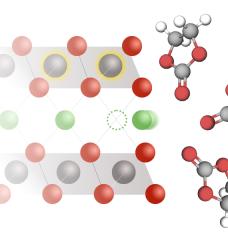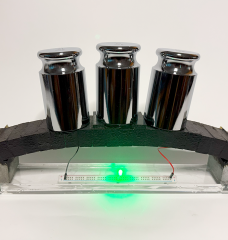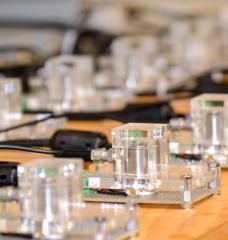
MIT’s Laboratory for Information and Decision Systems (LIDS) has been awarded $1,365,000 in funding from the Appalachian Regional Commission (ARC) to support its involvement with an innovative project, “Forming the Smart Grid Deployment Consortium (SGDC) and Expanding the HILLTOP+ Platform.”
The grant was made available through ARC's Appalachian Regional Initiative for Stronger Economies, which fosters regional economic transformation through multi-state collaboration.
Led by Kalyan Veeramachaneni, research scientist and principal investigator at LIDS' Data to AI Group, the project will focus on creating AI-driven generative models for customer load data. Veeramachaneni and colleagues will work alongside a team of universities and organizations led by Tennessee Tech University, including collaborators across Ohio, Pennsylvania, West Virginia, and Tennessee, to develop and deploy smart grid modeling services through the SGDC project.
These generative models have far-reaching applications, including grid modeling and training algorithms for energy tech startups. When the models are trained on existing data, they create additional, realistic data that can augment limited datasets or stand in for sensitive ones. Stakeholders can then use these models to understand and plan for specific what-if scenarios far beyond what could be achieved with existing data alone. For example, generated data can predict the potential load on the grid if an additional 1,000 households were to adopt solar technologies, how that load might change throughout the day, and similar contingencies vital to future planning.
The generative AI models developed by Veeramachaneni and his team will provide inputs to modeling services based on the HILLTOP+ microgrid simulation platform, originally prototyped by MIT Lincoln Laboratory. HILLTOP+ will be used to model and test new smart grid technologies in a virtual “safe space,” providing rural electric utilities with increased confidence in deploying smart grid technologies, including utility-scale battery storage. Energy tech startups will also benefit from HILLTOP+ grid modeling services, enabling them to develop and virtually test their smart grid hardware and software products for scalability and interoperability.
The project aims to assist rural electric utilities and energy tech startups in mitigating the risks associated with deploying these new technologies. “This project is a powerful example of how generative AI can transform a sector — in this case, the energy sector,” says Veeramachaneni. “In order to be useful, generative AI technologies and their development have to be closely integrated with domain expertise. I am thrilled to be collaborating with experts in grid modeling, and working alongside them to integrate the latest and greatest from my research group and push the boundaries of these technologies.”
“This project is testament to the power of collaboration and innovation, and we look forward to working with our collaborators to drive positive change in the energy sector,” says Satish Mahajan, principal investigator for the project at Tennessee Tech and a professor of electrical and computer engineering. Tennessee Tech’s Center for Rural Innovation director, Michael Aikens, adds, “Together, we are taking significant steps towards a more sustainable and resilient future for the Appalachian region.”






